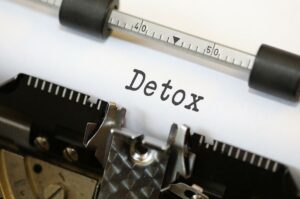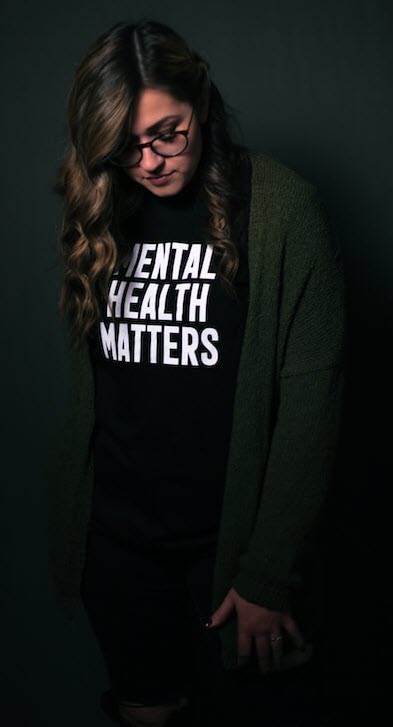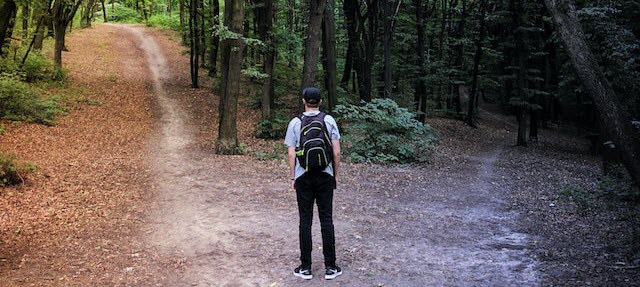Bowling Green Kentucky Substance Use Treatment
There are a variety of substance abuse treatment alternatives available in Bowling Green. Discover the various levels of treatment provided by The Addiction Resource Guide.

Drug abuse treatment programs differ based on a person’s needs and the intensity of their addiction. Some people may complete treatment on an outpatient basis, while others might require more intensive care, such as residential treatment. A group of addiction professionals can deal with a private to determine which substance abuse treatment program is best for them.
Types of Addiction Treatment Programs in Bowling Green KY
There are numerous types of Bowling Green Kentucky addiction treatment programs. Some people might travel through numerous phases of treatment, whereas others might only require a couple of levels of care.
Medical Detox for Drugs and Alcohol
A Bowling Green medical detox program is the first step for someone who is beginning treatment for a severe addiction to compounds like heroin, alcohol or benzodiazepines. In drug or alcohol detox, patients are supervised by skilled health professionals who can keep an eye on symptoms and make sure that patients remain safe while withdrawing from drugs or alcohol.

In a medical detox treatment program, personnel can provide medications to ease the pain of withdrawal as drugs and alcohol are leaving the body. For example, specialists report that people who are withdrawing from heroin might take lofexidine to reduce withdrawal symptoms. People may also take buprenorphine or methadone throughout medical detox. It is necessary to remember that medication is just used during withdrawal when medically cleared by a physician.
MAT
Medications can be utilized throughout the withdrawal process in medical detox, and they can also be a part of an ongoing medication-assisted treatment program. Medication-assisted treatment includes utilizing medications in tandem with counseling throughout the recovery process.
Medication-assisted treatment is normally utilized to deal with dependencies to illegal opioids, prescription opioids and alcohol. Medications can assist control cravings and stabilize both brain chemistry and physical performance. According to research, medication-assisted treatment can help people remain in treatment, decrease opiate abuse, boost survival rates and decrease criminal activity. Just like with medical detox, methadone treatment and buprenorphine are typically recommended in medication-assisted treatments for opioid addiction. Disulfiram and acamprosate may be utilized for the treatment of alcoholic abuse.
Related: Find Addiction Treatment Centers in roswell georgia
Inpatient Treatment for Bowling Green Residents
Bowling Green Inpatient drug rehab is usually offered in a medical facility or a clinic that concentrates on inpatient treatment. In this kind of treatment setting, physician monitor patients and have 24-hour access to nurses. People participating in inpatient treatment frequently get medications and therapy services and participate in group therapy.

Inpatient treatment generally involves ongoing evaluation of the addiction and monitoring of goals. When a patient has actually completed inpatient treatment, personnel produce a discharge plan and the client is moved to another treatment setting, such as ongoing outpatient therapy.
Bowling Green Kentucky Residential Rehab
Residential rehab is similar to inpatient treatment however is usually longer-lasting. According to the National Institute on Substance Abuse (NIDA), residential services typically happen beyond a medical facility setting, suggesting residential facilities offer more of a home-like environment. People receiving residential care live at the treatment facility on a full-time basis.
Stays in residential rehab can last for a few weeks or numerous months, with the goal of helping people develop healthy social abilities and change futile behaviors. However, the length of treatment is extensive and can differ extensively depending on both the program and the individual’s requirements.
Partial Hospitalization Program
A partial hospitalization program offers an alternative to inpatient or residential treatment. According to The Association for Ambulatory Behavioral Healthcare, these programs are provided either in healthcare facilities or freestanding clinics and offer intensive services. People who take part in a partial hospitalization program might get treatment during days, evenings, or weekends, and they return house in the evening. If an encouraging house environment isn’t readily available, clients might live in a sober living facility.
Partial hospitalization is suitable for patients who are not a threat to themselves however still require intensive treatment. In these programs, people invest more time in treatment than those in traditional outpatient programs, however they might be able to live in your home and get treatment through the Nobu teletherapy app.
Intensive Outpatient Programs
Intensive outpatient treatment includes group treatment sessions along with individual counseling. People who are participated in intensive outpatient treatment might likewise take medications and get medication management services. Depending on the program, customers may live off-site in your home or in sober living housing. Online therapy is also typical for this level of care.
Intensive outpatient programs are an option to hospitalization or inpatient programs. In many cases, people will start an intensive outpatient program after transitioning out of an inpatient setting. According to research, intensive outpatient programs offer at least 9 hours of service each week, however some programs might be more intensive.
Outpatient Rehab
Outpatient rehab is a step down from intensive outpatient treatment. Per the American Society of Addiction Medicine, someone in outpatient treatment receives less than nine hours of services every week.
Similar to intensive outpatient programs, outpatient rehab typically includes private and group counseling in addition to access to medication and medical services. In outpatient programs, people set up visits sometimes that fit their schedules, and they can continue to work in the neighborhood and live in the house throughout treatment. Outpatient programs offer flexibility, which is a benefit of this kind of treatment.
Dual Diagnosis

Dual diagnosis treatment is offered to individuals who have both an addiction and a mental health condition. For instance, a person who lives with opioid addiction and bipolar illness would be a candidate for dual diagnosis treatment.
With this form of treatment, people get incorporated services that resolve both addiction and mental health conditions. People in dual diagnosis services receive counseling, helpful services and medications. Treatment plans should consider both the mental health condition and the addiction to be reliable. For example, if an individual receives treatment for addiction, but underlying depression is not dealt with, the person may regression to drug use as a form of self-medication.
Court-Ordered Treatment
Court-ordered treatment is offered as a legal consequence for drug-related offenses, and includes repercussions for noncompliance. Studies reveal that court-ordered treatment is just as efficient, if not more so than voluntary addiction treatment. might take lots of types and often is carried out in the same setting as voluntary treatment. The specific requirements of treatment differ with each special court sentence. In some cases, treatment might be given as an option to incarceration or as a method to lower the length of incarceration or probation.
Depending upon the level of offense, types of court-ordered treatment consist of educations programs, group counseling, outpatient programs, community-based programs and residential programs.
Faith-Based Treatment
Some treatment facilities approach addiction recovery through the lens of spirituality. The most popular community support group, Twelve step programs (AA), was founded on strong spiritual principles and continues to promote faith-based healing to its 2 million members all over the world.

If you think that spiritual concepts might benefit your recovery, you can quickly discover treatment programs that implement these principles together with conventional medicine. Research reveals that recovering patients with higher levels of spirituality display positive qualities such as increased optimism, lower anxiety and greater strength to stress. By assisting an individual in recovery discover self-confidence, faith-based rehab centers wish to strengthen their course to sobriety.
Bowling Green Aftercare Facilities
Aftercare includes services that people participate in to maintain long lasting sobriety after finishing a treatment program. Aftercare services may include ongoing counseling, participation in support system, or linkage to case management or peer support services. Aftercare plays an important role in avoiding relapse. According to research, aftercare is more efficient when people take part in it for longer time periods.
Related: Find Addiction Treatment Centers in sunrise florida
Short-Term vs Long-Term Addiction Treatment in Bowling Green

Short-term treatment normally lasts around 30 days, but treatment of this length might not constantly be effective. NIDA reports that short-term residential programs are normally intensive, and it is essential for people to shift into an outpatient program after completing one.
Long-lasting treatment generally lasts somewhere between 3 and 12 months. Long-term residential treatment happens in a home-like setting, and people have access to medical care 24 hours a day. A common design for long-lasting treatment is the restorative community, and people in this type of program usually stay in treatment for 6 to 12 months. Long-lasting treatment typically starts with detox from drugs, and after that a person shifts into the program, which is initially rigorous and follows a structured schedule with rigid rules. As people make progress in treatment, they are granted more versatility.
The Addiction Treatment Procedure in Bowling Green KY
Addiction treatment is a process that typically takes place in stages. For instance, the treatment process for addiction generally begins with an intake consultation and continues from there.
The following are typical actions in an addiction treatment program:
- Consumption: The intake process involves an addiction expert gathering details to admit you into a treatment program. For instance, the specialist will discuss your health history and most likely carry out a standard medical exam. Standard information, such as date of birth, income, family background and work history will also be gathered during the consumption process.
- Screening & Evaluation: During the screening and assessment stage of treatment, a specialist will utilize a tool such as the Drug Abuse Screening Test (DAST) to identify the extent of an individual’s problems with drug abuse. These tools involve a short interview and efficiently offer the treatment team with details about an individual’s substance use. Utilizing screening and assessment outcomes, the expert team can determine what even more examinations are essential.
- Examination: After the screening and evaluation are completed, a full substance abuse assessment will be finished. This assessment will be more detailed. Throughout this examination, a clinician will collect info about your history of substance abuse, consisting of when you first started utilizing, what compounds you have utilized and how frequently and in what amounts you have used. The clinician will likewise discuss symptoms of your substance abuse, such as whether you experience withdrawal, what physical consequences you have actually experienced as an outcome of substance abuse and whether you have actually experienced legal difficulties or difficulties at work or house due to drugs. A clinician may utilize an assessment tool such as the Addiction Severity Index (ASI) to gather comprehensive details about your substance use and its effects.
- Developing a Treatment Plan: After a complete examination is completed, a clinician will deal with you to develop a treatment strategy. Addiction treatment prepares address locations of requirement, such as abstaining from drugs and getting employment, in addition to what services or resources will be made use of to attend to these areas. A treatment strategy likewise specifies long-term goals and shorter-term goals. Specialists report that treatment plans need to also utilize a client’s strengths.
How to Find a Drug or Alcohol Treatment Center Near Bowling Green
If you are prepared to get in treatment, the Substance Abuse and Mental Health Services Administration provides a substance abuse treatment locator. With this easy tool, you can enter your zip code and discover drug and alcohol treatment services located near you. The Addiction Resource Guide also uses regional rehab resources and has full-service treatment centers located throughout the United States
If you or a loved one is seeking addiction treatment, The Addiction Resource Guide has treatment centers located throughout the country and can develop a substance abuse treatment plan that satisfies your unique needs. Reach out to our caring admissions department today to discuss your requirements and start the journey toward recovery.
990 Wilkinson Trce Suite 446
Bowling Green, KY 42103
(866) 932-5985
